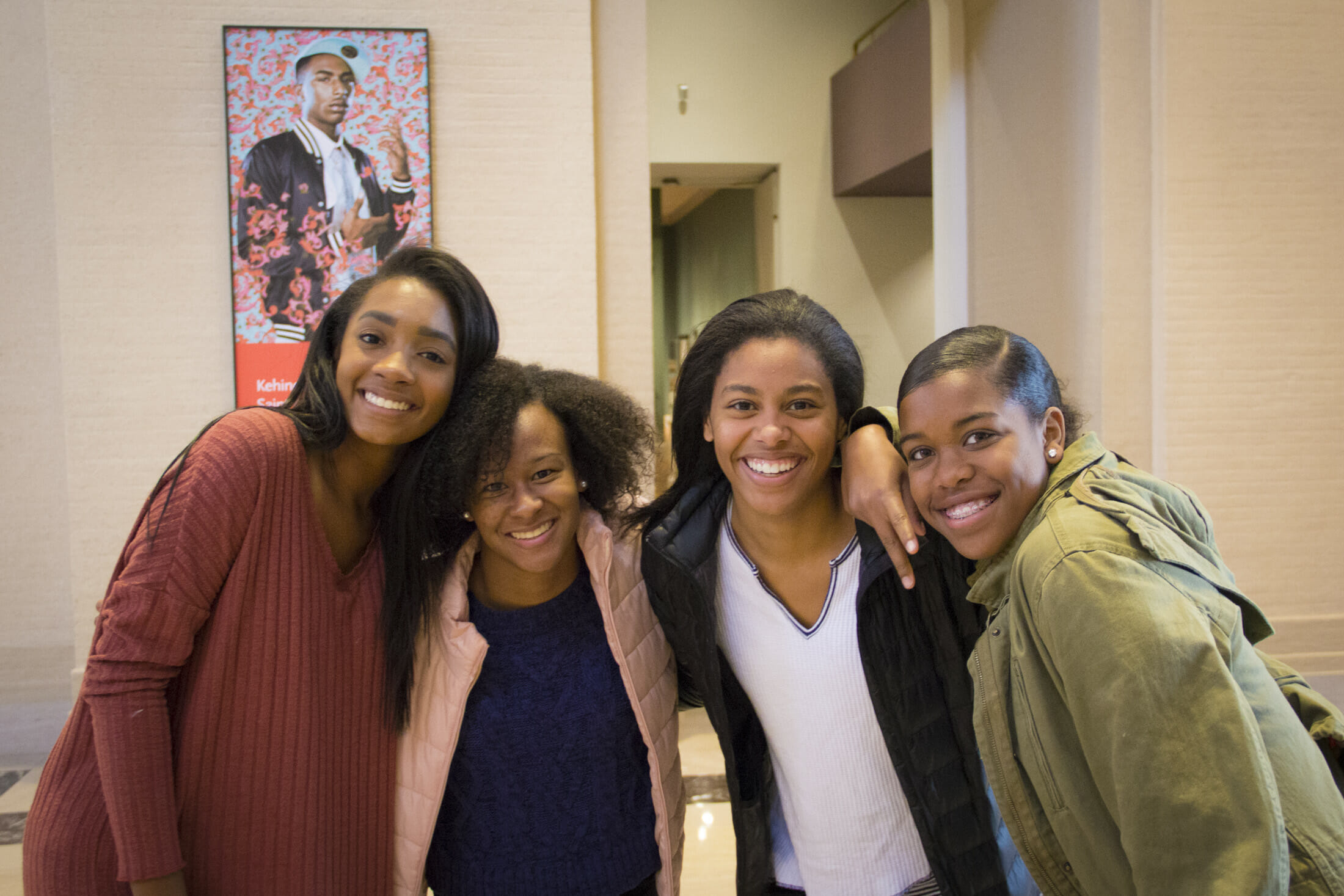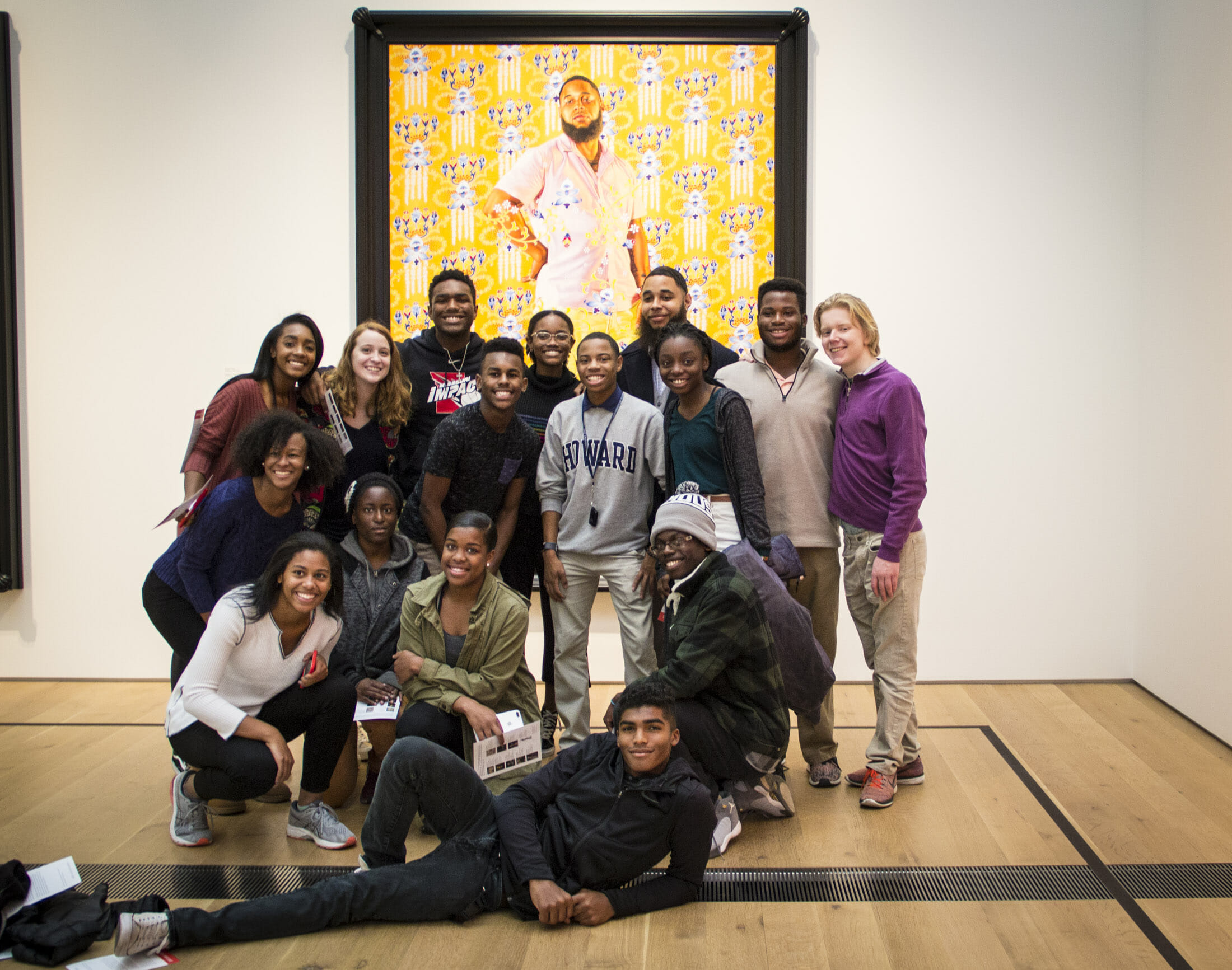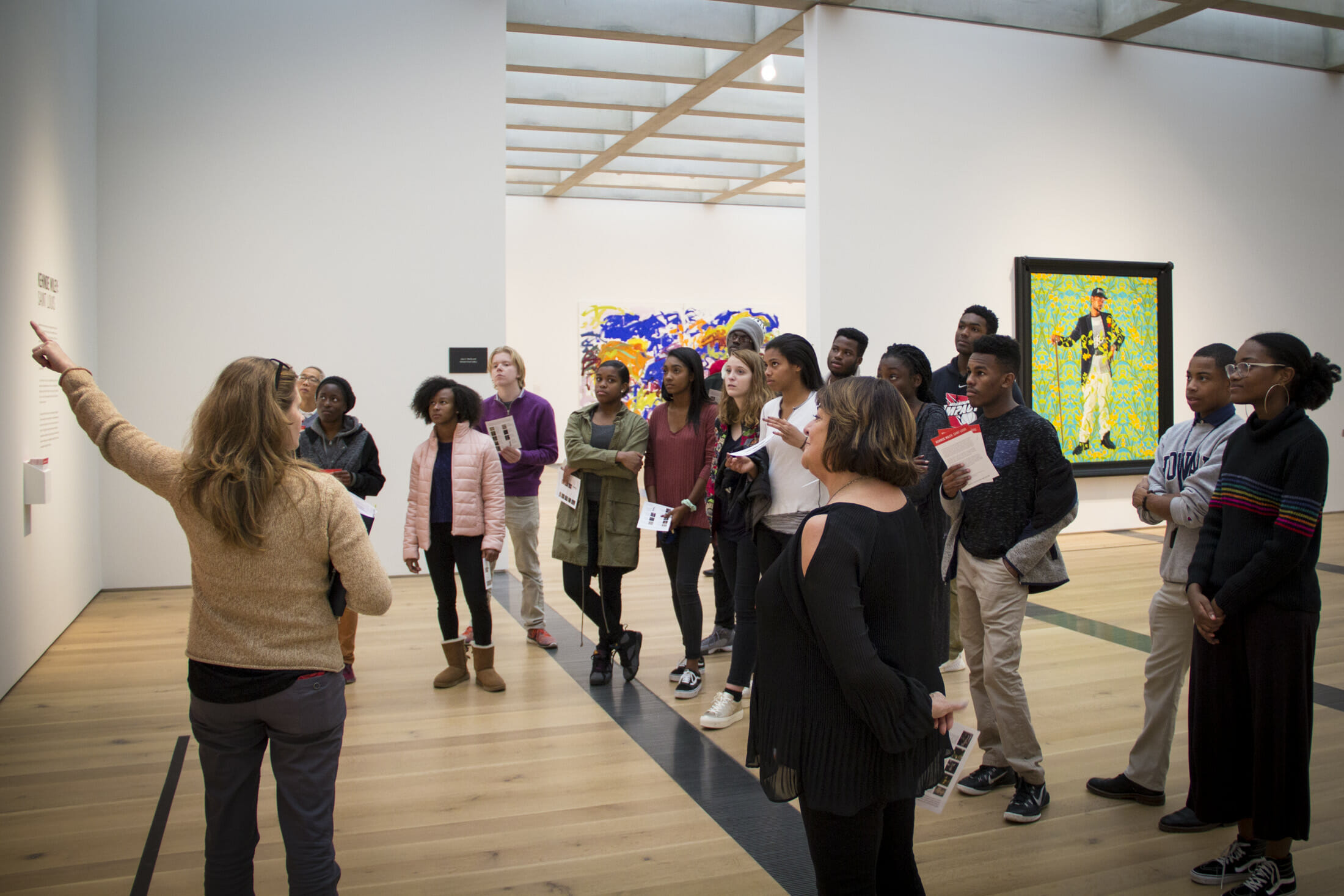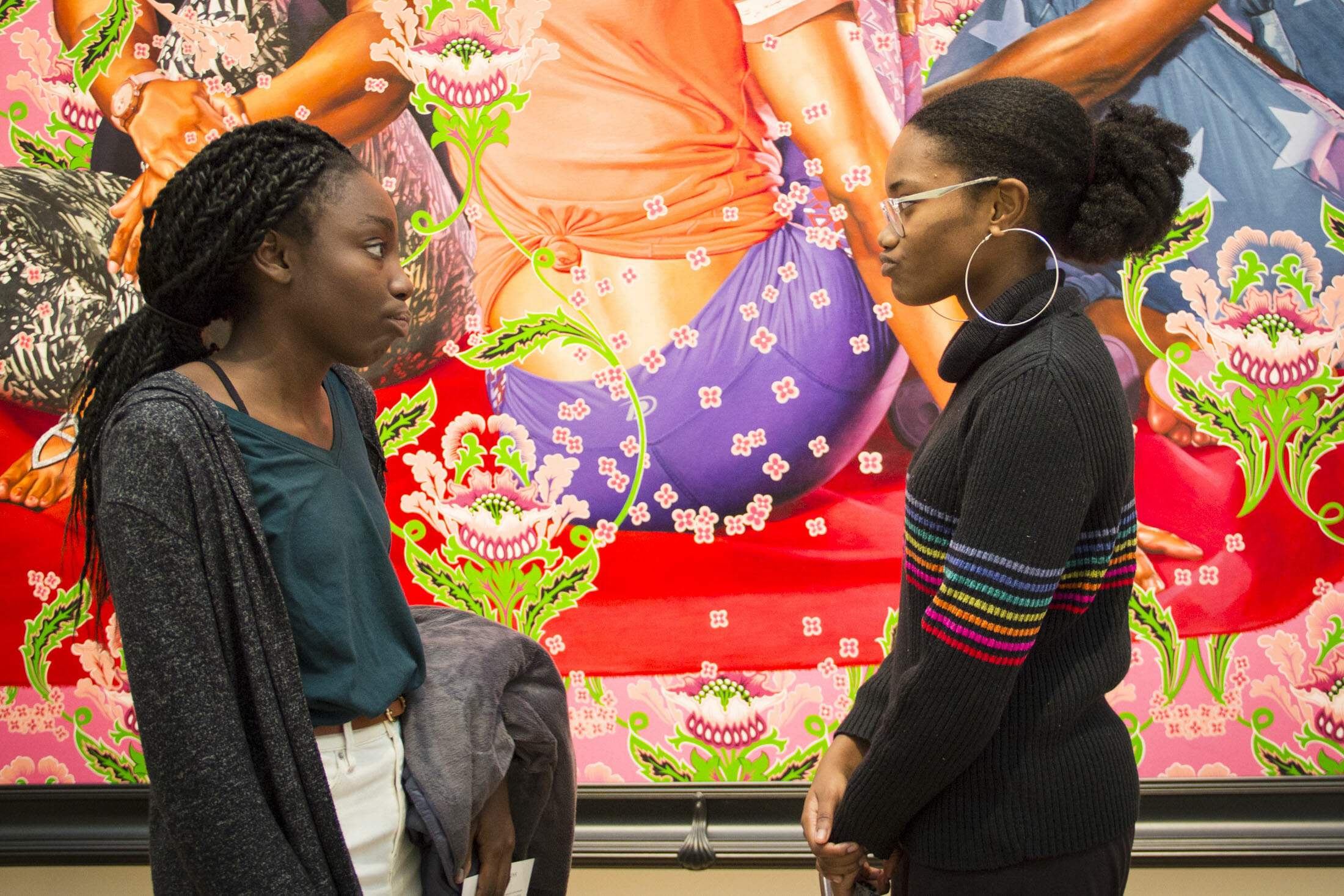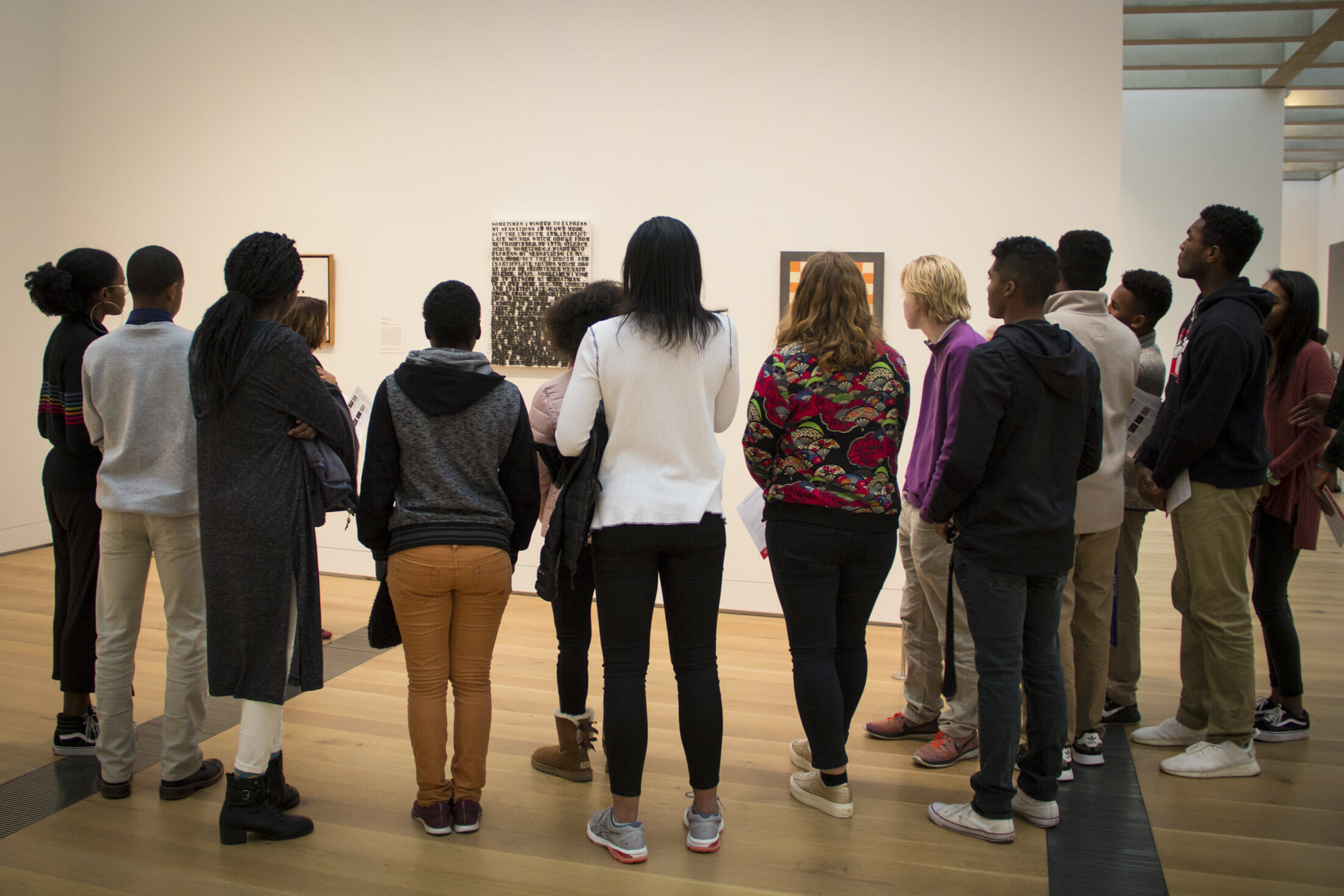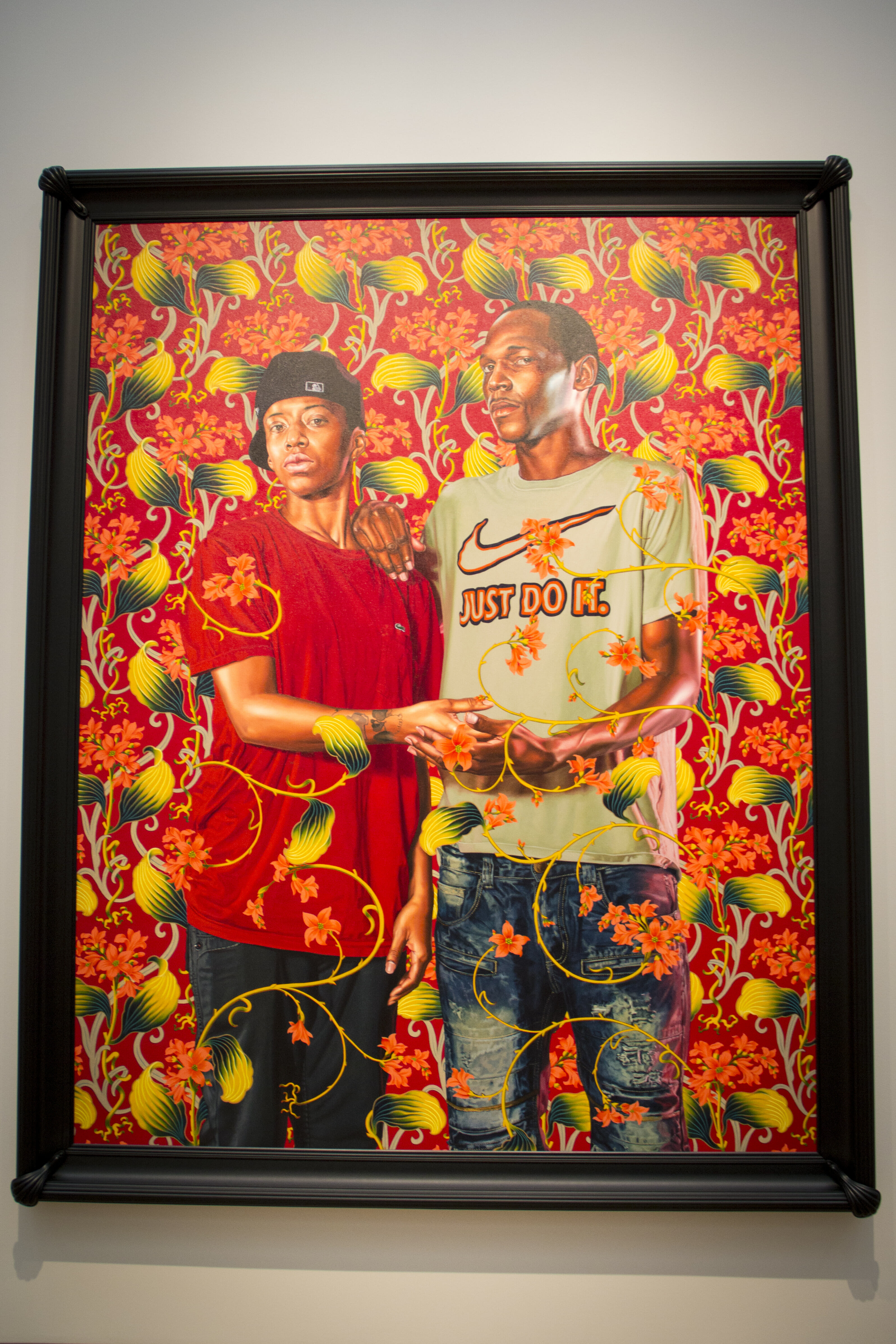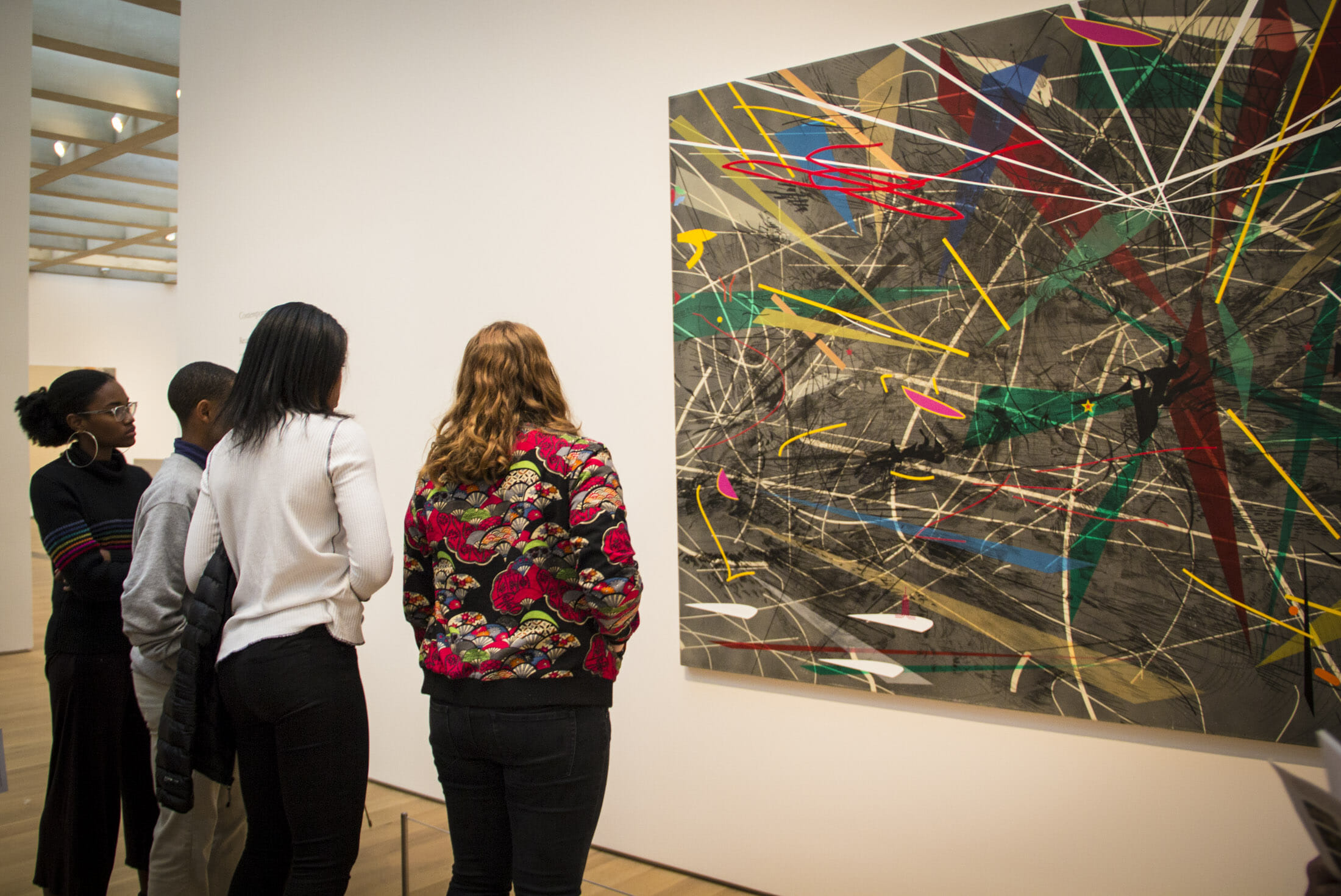On Thursday, October 25, the senior English elective, Literature of the Black Diaspora, visited the St. Louis Art Museum for a docent-led tour of the new Kehinde Wiley art exhibit, featuring Ferguson and Florissant residents. This class, taught by Upper School English Teacher Ms. Prince, has focused on representation, presentation and performance of blackness, and students have explored these ideas through literature, music and art. Through their collaborative and individual work, students have discussed and argued that the nature of blackness exists on a spectrum, while the definition of blackness can divide and unite the community. They’ve also explored how blackness on a global scale is often depicted negatively, whether through two-dimensional stereotypes or the slaying of black bodies on the news, which serves to perpetuate the narrative that being black isn’t praiseworthy or valuable.
Kehinde Wiley’s latest work thus becomes that much more important, especially in St. Louis. When Wiley was a kid, he fell in love with a painting of Kerry James Marshall titled De Style (1993) which depicted a regular, black-owned and operated barbershop. This experience made him realize the absence of other black images within the art museum.
During his stay in St. Louis, Wiley visited a barbershop in Ferguson, Missouri, where Michael Brown routinely got his haircut. Wiley wanted to recapture that experience he had as a young child at the museum while bringing attention to the recent atrocities in St. Louis. He wants people to understand how we have an “imagined personality and look and feel of a society.” He thinks it is important to “destabilize yourself” in order to understand the society we live in. His paintings are an attempt to deconstruct the beliefs we have held onto and continue to hold onto.
“It’s really important to talk about the heroic in my work because so much of the image of the black male in American society focuses on the pathetic, the downtrodden, the beleaguered. What I what I wanted to do was draw a psychological line between the pathetic and its opposite. The confusion between what we receive and what we want to see in art and popular culture has to be my subject matter,” Kehinde Wiley shares.
This field trip was our Literature of Black Diaspora class’ way of paying homage to a groundbreaking black artist who constantly aligns blackness with greatness, pride and excellence, forcing patrons to “look up” to black figures and hold their gaze. Each image the class observed asserted a bold message: “We are here.”
One highlight was a spontaneous meet-and-greet with one of the subjects from the paintings, who explained how he came to be a part of the project. Can you spot him in the photo with our class below?

Students also took pictures reenacting the same poses of each painting. Art teacher Mrs. D’Addario also played an invaluable role in explaining the distinct artistic elements, techniques and allusions present in each of Wiley’s paintings, reminding students that art, just like literature, is purposeful and deliberate.
What a serendipitous trip and a tremendous opportunity for our students!

